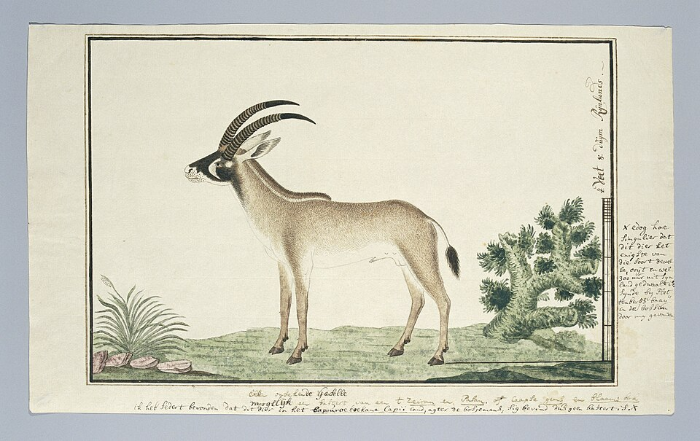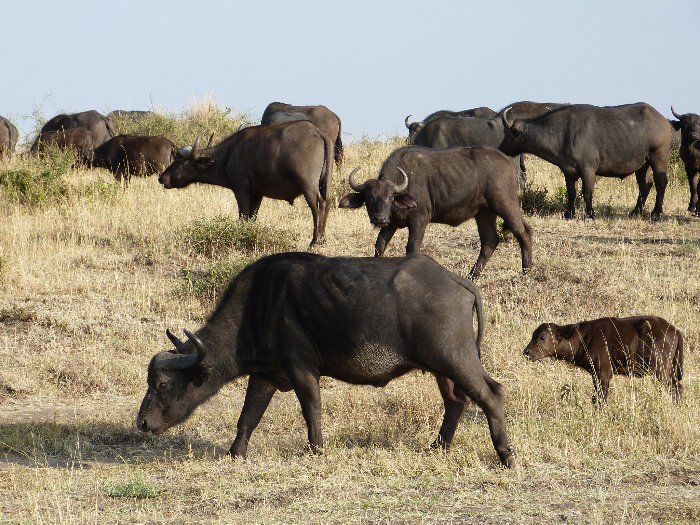Byneskranskop (BNK1, 34°34’41.88″S 19°28’13.92″ E) is an archaeological website consisting of three caves that had been excavated between 1973 and 1976 by Franz Schweitzer and M. L. Wilson, and was revealed to have been occupied by people for the previous 12,500 years. It’s one in every of many outstanding websites within the area; most notably Die Kelders Cave, the primary archaeological website within the space, and Blombos Cave, the positioning of a number of the oldest types of human artwork ever discovered. What makes Byneskranskop stand out, and of specific curiosity to conservation, nevertheless, is an ungulate species that would make a comeback within the area, if reintroduced: the Roan Antelope.
The unique objective of excavating the BNK1 website was to try to bridge a spot in timelines related to human occupation between the Center Stone Age and Late Stone Age, primarily based on findings at Die Kelders Cave, some 10km southwest of BNK1. Artefacts and stays appeared to fade between 57,000 B.P.(earlier than current) and a pair of,000 B.P.
BNK1 helped fill the hole, with the earliest dates pointing to 13,000 B.P.
Of the findings at BNK1, artifacts included scrapers product of stone, bone, and marine shells; beads made out of ostrich shell; elaborate shell pendants, and pottery shards. There have been additionally human stays, in addition to bones of 600 particular person organisms. These included Mammals, Shellfish, Birds, Reptiles, Plant stays, Fish, and the topic of later examine, and our focus at the moment, Hippotragus equinus. The Roan Antelope.
One specimen was present in a layer with carbon relationship pointing to ~3000 B.P., which was cited in a later 2012 journal, Palaeontology in Ecology and Conservation. The authors of that journal speculated that the weather conditions of at the moment can be enough to maintain the Roan as soon as once more, if reintroduced, because the species was discovered comparatively just lately, alongside domesticated sheep.

Regardless of the Roan Antelope being disregarded by different researchers of their vary maps, in addition to the common historic lack of this species roaming freely, the truth that the Roan Antelope was present in
affiliation with domesticated sheep, solely thought to have arrived in southern Africa 1900 years in the past, tells one other story.

I say “common” lack of historic illustration, as a result of as I used to be researching this text, I discovered this depiction by Robert Jacob Gordon, relationship to 1778 of a “Bastergemsbok (Hippotragus equinus), cross between a gemsbok and a bloubok…at Plettenbergsbaaij discovered within the woods…”. Extra on this later.
Again to digging..the opposite species present in BNK1 in the identical layer as H. eguinus had been Cape Buffalo and Hartebeest, each included within the vary maps of Boschoff and Kerley, and the topic of current
re-introductory success.
The Cape Buffalo has made a comeback within the Nuwejaars Wetlands Particular Administration Space within the type of a small herd, with the primary calves being born in over 200 years within the space. Since their reintroduction, they’ve been serving an important position, as bulk grazers, in clearing waterways and serving to the wetlands of the Agulhas plain keep wholesome. Eco-tourism has additionally been an ideal new supply of earnings to farming communities who’ve relied on the land for generations, and now function custodians of the distinctive ecosystem that’s the Agulhas plain. The success of the Cape Buffalo in Agulhas thus paves the best way for extra species to be reintroduced.

Apparently sufficient, I got here throughout trendy distribution maps of H. eguinus on iNaturalist and discovered a couple of pings in South Africa. Though it is unclear whether or not any of the animals are wild, their presence simply additional reveals their survivability within the space, particularly within the southern Cape. I reached out to Herentia Vermeulen from Rooiberg Non-public Nature Reserve, who has Roan on the land, and she or he instructed me that, excluding very dry durations when feed is given, the veld sustains the Roan herd all year long. One other fascinating discover is that the taxon ascribed to many of the sightings in southern Africa is that of the Southern Roan Antelope (H. equinus ssp. equinus).
What I’ve written right here in layman’s phrases was superbly articulated and additional researched by J. Tyler Religion within the paper Conservation Implications of Fossil Roan Antelope (Hippotragus equinus) in Southern Africa’s Cape Floristic Area On this paper, Robert Gordon’s 1778 depiction of the “Bastergemsbok” stood as one of many anchoring arguments for The Roan Antelope’s southern Cape nativity. I’m completely satisfied to have independently stumbled upon the identical drawing throughout my analysis.
The significance of palaeontology and palaeoecology in trendy conservation efforts spans a lot additional than single species reintroduction(as fantastic and profitable because it has been). As local weather change shifts our understanding of ecosystems, with the ability to take a look at landscapes via the lens of deep time, again to when related large shifts had been taking place, can be a useful device shifting ahead. What extra lies beneath our ft, in caves and cracks of the Earth?
